How Pallet Inverters Solve Multi-Standard Adaptability Across EU Warehouses?
Have you ever shipped goods to Europe, only to face a logistical nightmare at the destination? Your products are perfectly stacked on your company's pallets, but the European warehouse requires everything to be on a standard EUR-pallet. This creates a sudden, costly problem. Your team must now manually transfer the entire shipment, one box at a time. This process is slow, expensive, and risks damaging your products and injuring your workers. It’s a frustrating bottleneck that eats into your profit margins and efficiency.
A pallet inverter is the most effective solution for adapting to multiple pallet standards in European warehouses. It is a machine that securely clamps a loaded pallet, rotates it 180 degrees, and allows the original pallet to be quickly and safely exchanged for a new one, such as a standard EUR-pallet. This mechanical process eliminates manual handling, dramatically speeds up transfer times, reduces labor costs, and minimizes the risk of product damage.
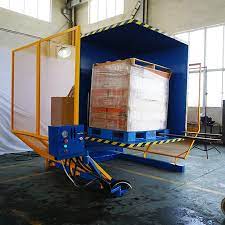
This simple piece of equipment can seem like just another machine on the factory floor. But from my experience as an engineer and now a factory owner, I see it as a strategic tool. It's a key that unlocks efficiency and solves a very specific, very expensive problem in global logistics. For a leader like Javier Morales, who scrutinizes every investment for its ROI, understanding how this machine works is crucial. Let's explore how it tackles the challenges of a complex supply chain.
How do pallet inverters handle the mix of EUR, CHEP, and UK standard pallets?
Your shipment arrives at a warehouse in Germany. The goods are on your standard pallets, but the facility operates exclusively with pooled CHEP pallets. Suddenly, your logistics chain grinds to a halt. You're now facing unplanned labor costs and potential delays as workers manually restack everything. This single point of failure, the pallet, has created a significant operational headache. What if you could solve this problem in under a minute with a single machine?
Pallet inverters solve this by providing a fast, automated method to transfer goods from any type of pallet to another. The machine clamps the entire load, rotates it, and allows the operator to swap the original pallet (e.g., your in-house one) with the required standard (e.g., a EUR or CHEP pallet). This makes the operation seamless, regardless of the incoming or outgoing pallet type.
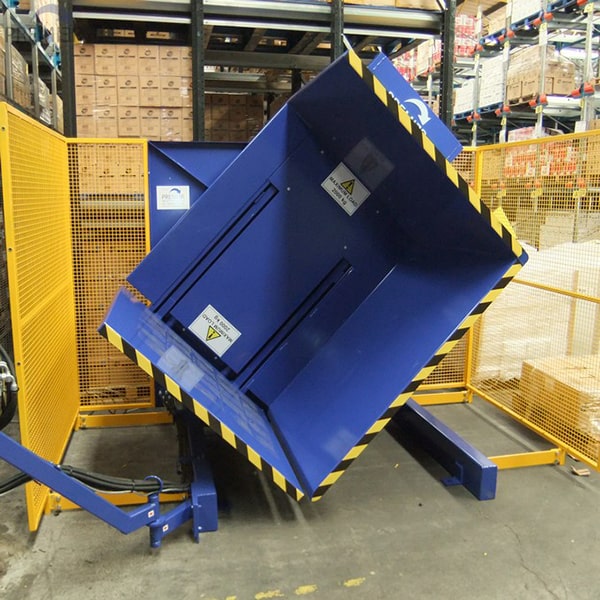
The Challenge of Multiple Pallet Systems
In my years in the industry, I've seen how pallet management can become a major cost center if not handled correctly. Europe's logistics network is particularly complex. You have company-owned "white" pallets, like the standard 1200x800mm EUR-pallet. Then you have rental or "pooled" pallets, most famously the blue CHEP pallets and red LPR pallets. A warehouse might require you to ship out on their CHEP account pallets to avoid fees. If your goods arrive on a non-standard or company-owned pallet, a transfer is mandatory. Furthermore, with Brexit, the UK has reinforced the use of its own standard 1200x1000mm pallet, adding another layer of complexity for goods moving between the UK and the EU. Ignoring these standards leads to costly transfers, rental fees for keeping pallets too long, or even rejected shipments. A pallet inverter centralizes this transfer process into one efficient station.
The Simple Mechanics of a Secure Transfer
The beauty of a pallet inverter is its simplicity and effectiveness. The process is straightforward. A forklift places the entire loaded pallet into the machine. The machine's clamping tables, one on top and one on the bottom, press together to secure the load. The pressure is adjustable, so you can handle sturdy goods like steel parts or delicate items without causing damage. The machine then rotates the entire load by 180 degrees. The original pallet is now on top, free to be removed. The operator places the new, required pallet (e.g., a EUR-pallet) onto the load. The machine rotates back, and the newly palletized goods are ready to be moved. The entire cycle often takes less than 60 seconds. This is a massive improvement over manual methods that can take two workers 15-20 minutes.
A Comparison of Transfer Methods
| Metric | Manual Pallet Transfer | Pallet Inverter Transfer |
|---|---|---|
| Time per Pallet | 15-25 minutes | 1-2 minutes |
| Labor Required | 2 workers | 1 operator |
| Risk of Injury | High (lifting, repetitive motion) | Very Low (machine does the work) |
| Risk of Damage | Moderate to High (dropping, shifting) | Very Low (load is secured) |
| Consistency | Low (depends on workers) | High (repeatable process) |
| Operational Cost | High (labor, damages, time) | Low (electricity, maintenance) |
What are the real operational costs of ignoring pallet incompatibility?
You see a line item on a report for "unloading and handling fees" from your European logistics partner. It seems small at first, but it appears on every invoice, for every shipment. You investigate and find this cost is mostly for manual labor to switch pallets. This small, recurring cost is a symptom of a larger problem. It represents lost time, potential product damage, and a major inefficiency in your supply chain. These hidden costs add up, quietly eroding the profitability of your European operations.
The real operational cost of ignoring pallet incompatibility is a combination of direct labor expenses, losses from product damage, and the cascading effect of shipping delays. Manually re-stacking pallets is slow and labor-intensive. It also significantly increases the chances of dropping boxes, which can damage both the product and its packaging, making it unsellable. These direct and indirect costs far exceed the investment in a mechanical solution.
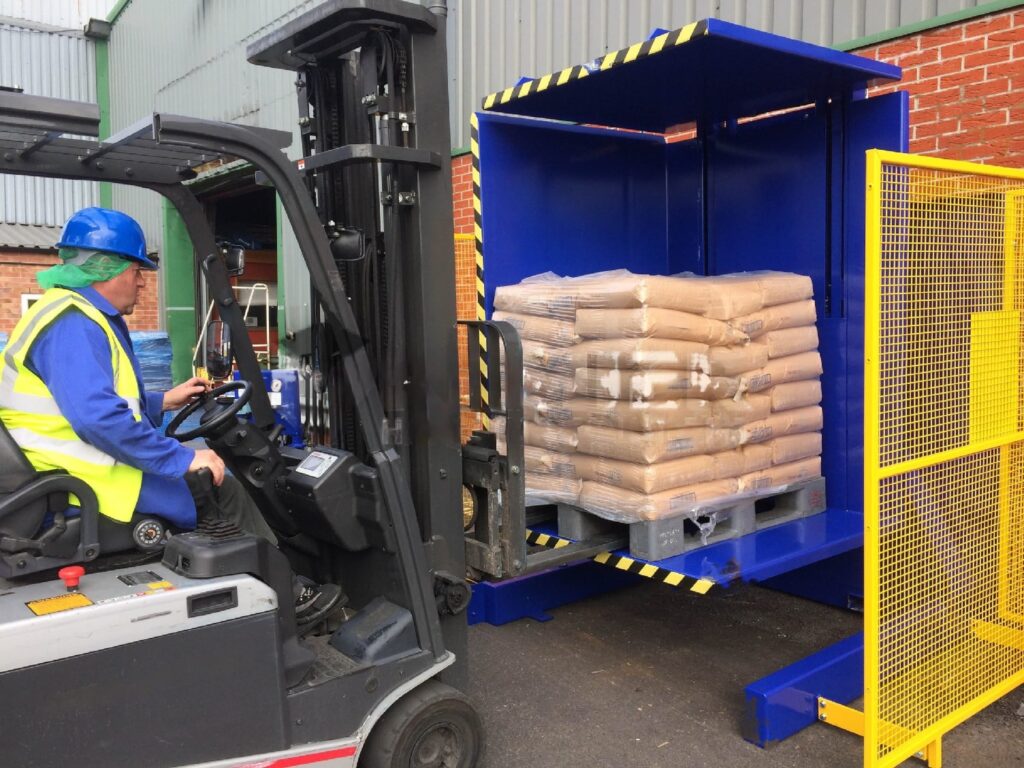
Calculating the True Cost of Manual Labor
Let's do some simple math, the kind of analysis a practical leader like Javier appreciates. Assume it takes two warehouse workers about 20 minutes to manually transfer a load from one pallet to another. If the average loaded labor cost per worker is €25 per hour, the cost for that single transfer is approximately €16.67 in labor alone. If your facility handles just 20 such pallets a day, that's over €330 per day. Annually, this amounts to more than €80,000 spent on a non-value-added task. This calculation doesn't even include the costs of supervisor oversight or the opportunity cost of what those workers could have been doing instead, like picking orders or loading trucks. A pallet inverter, operated by one person in about one minute, reduces that per-pallet labor cost to less than €0.50. The payback period for the equipment is often surprisingly short.
The High Price of Product Damage and Safety
When I was starting out as an engineer, I spent a lot of time on factory floors. I saw firsthand what happens during manual handling. Workers get tired. They rush. Boxes get dropped, corners get crushed, and packaging gets torn. For many products, damaged packaging means the product cannot be sold as new. This results in direct financial loss through returns, write-offs, or selling at a steep discount. A pallet inverter holds the entire load securely throughout the transfer process. The clamping mechanism prevents items from shifting or falling, preserving the integrity of both the product and its packaging. Furthermore, manual handling of heavy loads is a leading cause of workplace injuries, particularly back strains. These injuries lead to lost workdays, increased insurance premiums, and potential legal liabilities. Automating this task with an inverter is a direct investment in the safety and well-being of your employees.
Cost Breakdown: Manual vs. Inverter
| Cost Factor | Manual Handling (Per Pallet) | Pallet Inverter (Per Pallet) |
|---|---|---|
| Direct Labor Cost | €10 - €20 | < €1 |
| Estimated Damage Cost | 1-3% of goods value | < 0.1% of goods value |
| Time Delay Cost | High (potential for truck waiting fees) | Minimal |
| Injury Risk Cost | High (insurance, lost time) | Extremely Low |
| Total Impact | Significant negative impact on ROI | Positive impact on ROI |
How does a pallet inverter fit into a modern, automated warehouse?
You're investing heavily in digital transformation. You've implemented a Manufacturing Execution System (MES) and are exploring Automated Storage and Retrieval Systems (ASRS) to reach that goal of 95% equipment uptime. But a fully automated system is only as strong as its weakest link. If goods arrive at your receiving dock on inconsistent or damaged pallets, it creates a manual chokepoint right at the entrance to your streamlined facility. How do you bridge the gap between the chaotic outside world and your highly optimized internal processes?
A pallet inverter acts as a crucial gateway in a modern automated warehouse. It is integrated directly into conveyor lines at receiving or shipping docks. It ensures that all goods entering an automated system, such as an ASRS, are on standardized, high-quality pallets. This prevents system jams, errors, and downtime, allowing the entire automated infrastructure to operate at peak efficiency.
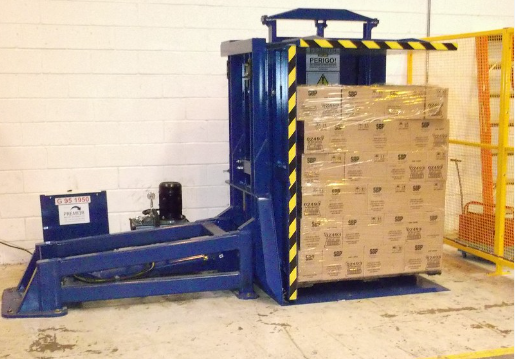
Integration with Conveyor and ASRS Systems
For a fully automated workflow, a pallet inverter shouldn't be a standalone island. We design them to be part of a larger system. An inline model can be placed directly within a conveyor line. When a pallet arrives, sensors detect if it's the wrong type or quality. The conveyor automatically routes it into the inverter. The transfer happens without a single person touching the load. Afterward, the goods proceed on the correct pallet into the main system. This is especially critical for ASRS. ASRS cranes and shuttles are precision machines. They are designed to handle pallets with very specific dimensions and tolerances. A broken board or a non-standard pallet can cause a catastrophic jam, shutting down a huge section of your warehouse and requiring hours of difficult manual intervention to fix. The pallet inverter is the quality control gatekeeper that prevents this from happening.
The Role of Data and Safety in Integration
A modern pallet inverter is more than just steel and hydraulics. It's an intelligent piece of equipment that fits into a connected factory. We equip our machines with PLCs (Programmable Logic Controllers) that can communicate with your primary Warehouse Management System (WMS) or MES. This allows for tracking, data logging, and remote diagnostics. Safety is also paramount in an automated environment. Our integrated systems come with light curtains, safety scanners, and physical guarding. If a person enters the operational area, the machine stops immediately. This ensures that you can run a "lights-out" operation with confidence, knowing that your people and equipment are protected. This level of integration and safety is exactly what forward-thinking leaders like Javier look for when building the factory of the future. It's not just about solving today's problem; it's about building a robust platform for tomorrow's growth.
Automation Levels for Pallet Inverters
| Automation Level | Description | Best For | Key Benefit |
|---|---|---|---|
| Standalone | Forklift loaded and operated manually by one person. | Lower volume, high variability in load types. | Maximum flexibility. |
| Semi-Automated | Pallet fed by conveyor, but cycle initiated by an operator. | Medium volume, integrating into a single process point. | Bridges manual and automated areas. |
| Fully-Automated (Inline) | Fully integrated with conveyors and WMS. No operator needed. | High volume, ASRS integration, large distribution centers. | Unmanned, seamless operation. |
What key features should a CEO look for in a pallet inverter for maximum ROI?
You are ready to invest. You've seen the numbers and the operational benefits. But now you face a market with many suppliers, each claiming to have the best machine. As a CEO and an engineer, you know that the details matter. A cheap machine that breaks down will cost more in the long run than a well-built one. So, what specific features separate a reliable, long-term asset from a future maintenance headache?
From my perspective as both an engineer who designs these machines and a factory owner who relies on them, the key is to look beyond the price tag. For maximum ROI, a CEO should focus on build quality, the precision of the clamping system, operational versatility, and the quality of after-sales support. These are the factors that ensure machine uptime, safety, and a low total cost of ownership.
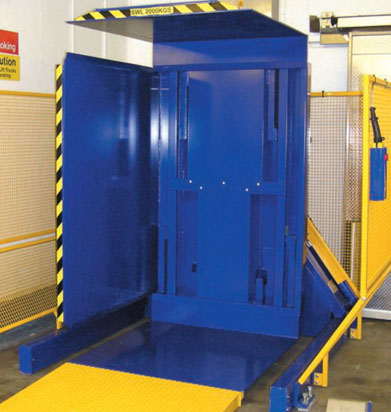
Build Quality and Durability
This is non-negotiable, especially in a demanding environment like a steel plant. A pallet inverter is a heavy-duty machine. Look at the thickness of the steel frame. Check the quality of the welds. A machine built with heavy-gauge steel will withstand the rigors of daily use without flexing or fatigue. Ask about the hydraulic and electrical components. Are they from reputable, globally recognized brands? Using top-tier components means better reliability and easier access to spare parts down the line. A low-cost machine often cuts corners here. A breakdown doesn't just stop the inverter; it can halt your entire shipping or receiving department. Achieving your goal of 95% equipment uptime starts with buying equipment that is built to last.
Precision Clamping Pressure Control
This single feature is critical for versatility and product safety. Not all loads are the same. You might be handling robust steel parts one day and fragile finished goods the next. A basic pallet inverter has a fixed clamping pressure, which is a one-size-fits-all approach that rarely works. A superior machine offers adjustable clamping pressure. The operator or an automated system can set the exact pressure needed. This ensures heavy loads are held securely without slipping, and delicate loads are held gently without being crushed. This precision prevents product damage, which is a direct hit to your bottom line. It's a technical detail that has a massive financial impact.
My Essential Feature Checklist for High ROI
At SHJLPACK, our mission is to be a knowledge-sharing platform. We believe an informed client is our best partner. When I consult with clients, I tell them to think like an engineer and an owner. This table breaks down what I consider essential.
| Feature | Why It Matters for ROI | Our Approach at SHJLPACK |
|---|---|---|
| Heavy-Duty Steel Frame | Prevents breakdowns and ensures long service life, maximizing uptime. | We use reinforced, heavy-gauge steel frames built for industrial environments. |
| Adjustable Clamping Pressure | Protects product from damage, reducing write-offs and returns. | Our machines feature precise hydraulic controls for a wide range of pressures. |
| High-Quality Components | Increases reliability and simplifies maintenance with easy-to-source parts. | We partner with leading brands like Siemens and Schneider for key components. |
| Comprehensive Safety Features | Protects your workforce and minimizes liability. Essential for modern facilities. | We integrate light curtains, safety fencing, and emergency stops as standard. |
| Strong Partner Support | Ensures smooth installation, training, and fast solutions if issues arise. | We provide total support, from initial design to long-term maintenance. We are a partner, not just a supplier. |
Conclusion
Ultimately, a pallet inverter transforms a major logistical problem into a simple, automated process. It is a strategic investment in efficiency, safety, and adaptability for any modern warehouse.


